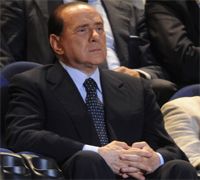THE FIRST AT MILANELLO
5/20/2010 6:17:00 PM
After a few days off, Milan returned to work this afternoon at Milanello to prepare the American tour. The first session of the week saw the team involved in tactical work.
 (on the archive photo: A MOMENT OF THE MATCH)
(on the archive photo: A MOMENT OF THE MATCH)MILAN - After the end of the league, the team started preparing today for the three matches in USA and Canada. The first training of the week, in fact, saw the Rossoneri come together at 14.30 in the dressing rooms to start work at 15.00 on the lowered pitch at the Carnago sporting center.
After the first 15 minutes dedicated to warming up without the ball, the Rossoneri were involved in an exercise on ball possession by coach Mauro Tassotti.
After that the players played three eight-against-eight matches of 12 minutes each.
Bonera, Kaladze, Ambrosini and Roma did personalised work.
Also the eight players who will probably be involved in the World Cup adventure, to which Ronaldinho added himself, did personalised work.
Along with the Rossoneri, today also Gennaro Delvecchio, Davide Di Gennaro, Marcus Diniz Paixao, players who have been loaned for the American tour, worked, and tomorrow also Cristian Brocchi,, Roberto Colombo, Claudio Terzi and Manuele Blasi will join.
The session ended around 16.20. Tomorrow the team will have one training session. The reunion in the dressing rooms will be at 10.30 to start work at 11.00.



































